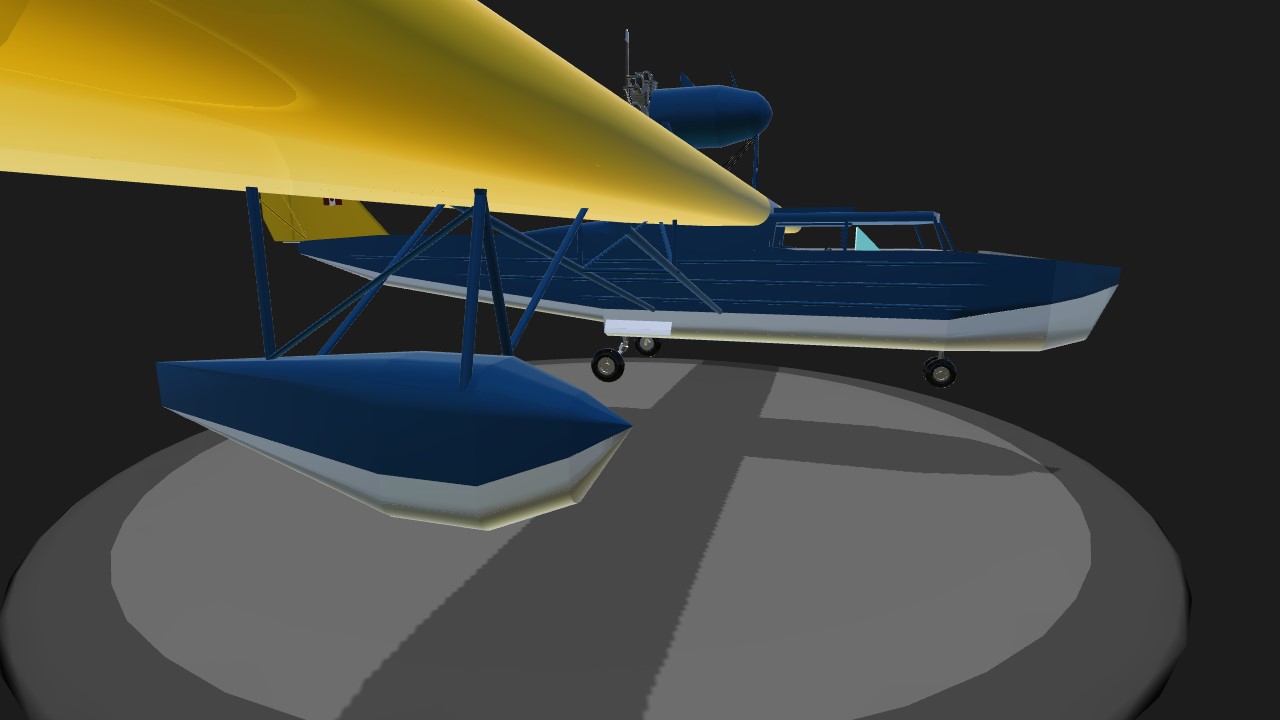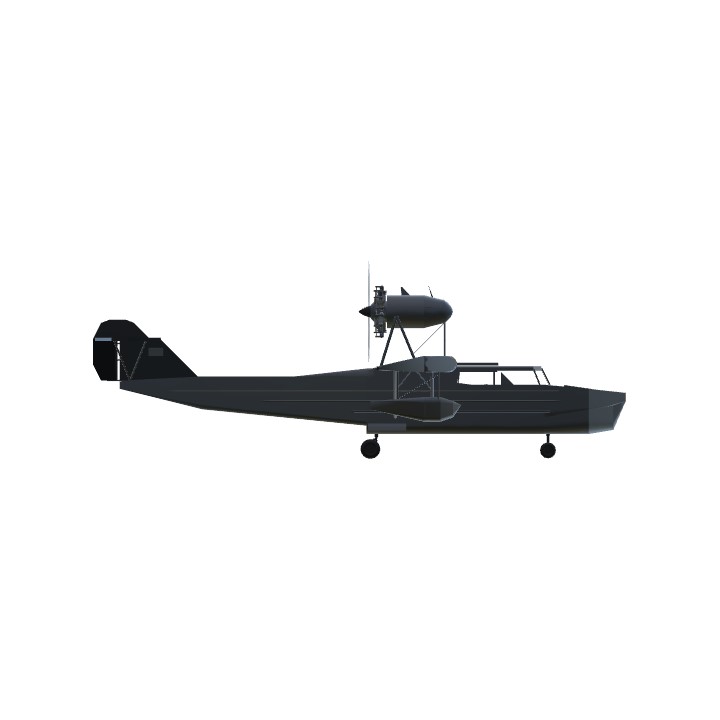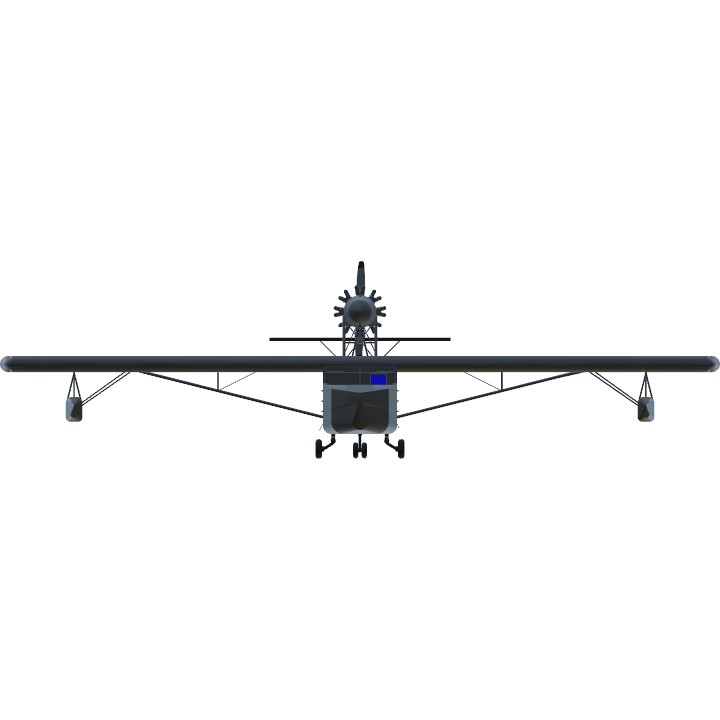Remarks by Johan Visschedijk: "While proceeding with the manufacture of the C-204s and 40H-4s, Boeing of Canada pressed on with the design of a small flying boat. Chief Engineer, Edward Fothergill Elderton, was responsible for its design. Elderton was a British engineer who had come to Canadian Vickers from Saunders-Roe and then joined Boeing of Canada. The model number assigned, A-213, seems to fit in with the numbers in use by the parent company although the significance of the 'A' prefix is unknown. The name Totem is a contraction of totem pole.The aircraft accommodated four people in an enclosed cabin which was entered through a hatch. Its design owed little to the parent company except for its aerofoil Boeing 103, and its rudder shape was influenced by the rudder of the Boeing 204. The hull was made of Alclad duralumin sheet with longitudinal stiffening beads in the skin and showed a strong Saunders-Roe influence. The fabric-covered wing had spruce spars and steel ribs. The tail surfaces were of welded steel-tube and fabric covered. A novel feature was the water rudder which retracted into the rudder proper.While the evidence is not conclusive it appears that the Totem was first flown at Vancouver on June 16, 1932, by W.J. Holland. Powerplant was a 300 hp Pratt & Whitney Wasp R-985 Junior A nine-cylinder air-cooled radial engine. On July 29, 1932, it was taken for its first preliminary full-load test by D.R. MacLaren. On September 25 it was reported that an official test had been made by A.H. Wilson, pilot, with R. Carter Guest, Civil Aviation Branch of the Department of National Defense, and Flight Lieutenant A.L. Johnson, Aeronautical Engineering Branch, RCAF, as official observers.The Totem served all its life in British Columbia, with the occasional trip to Alaska. From May 1935 to January 1938 it was operated by Canadian Airways Ltd. and used primarily for fishery patrols. It was retired in 1942 and apparently scrapped. A couple of notes on This plane it tends to yaw towards the side in witch you are rolling also full credit to the creator of the awesome radial engine ! As always have fun and enjoy!
Specifications
General Characteristics
- Successors 7 airplane(s) +219 bonus
- Created On iOS
- Wingspan 71.8ft (21.9m)
- Length 53.0ft (16.1m)
- Height 19.7ft (6.0m)
- Empty Weight 7,917lbs (3,591kg)
- Loaded Weight 20,559lbs (9,325kg)
Performance
- Power/Weight Ratio 0.109
- Horse Power/Weight Ratio 0.048
- Wing Loading 21.3lbs/ft2 (104.0kg/m2)
- Wing Area 965.4ft2 (89.7m2)
- Drag Points 18811
Parts
- Number of Parts 429
- Control Surfaces 13
- Performance Cost 1,234







Can I use this plane to re uploaded with different painting and removing some parts
Great thanks!
LOVE this plane!
Thanks @Thelaw11
nice detail @Cedy117
Sure sounds cool @BritishNarwhal
Hey @Cedy117 Can I post a copy I made of this? I changed the engines and a few other things
Thanks! No problem @1996DaleCN
awesome plane!thank you dude!
Thanks! @JakesAirplanes1
It may of been a different plane all of these ones are gone now @bjac0
I think i saw a land variant of one of these fly over my house yesterday!
Awesome work!
Great thanks! @LordHarryHillbark
My favourite plane at the moment...thanks
Thanks! I already made one look in my planes @Redstoneracer24
Should so make this https://en.m.wikipedia.org/wiki/DeHavillandCanadaDHC-6Twin_Otter
Looks great flies better anything over ever made and even flies great for anything it's size
@Cedy117 you're welcome :D
Thanks! @MinePlayX
Ahh ok thanks for the great engine! It will come in handy for some of my biplane builds @OtakuSquirrel
Men i Love this Plane its fly so smooth :D
awesome plane! nice to see you made use of my engine :)
the Wasp R-985 was actually what I tried to model the engine after but I wasnt able to make it a 9 cylinder unfortunately. too many complicated angles
Yep glad you like it! @NotAirbus
Thanks! @TheMasterSoldier